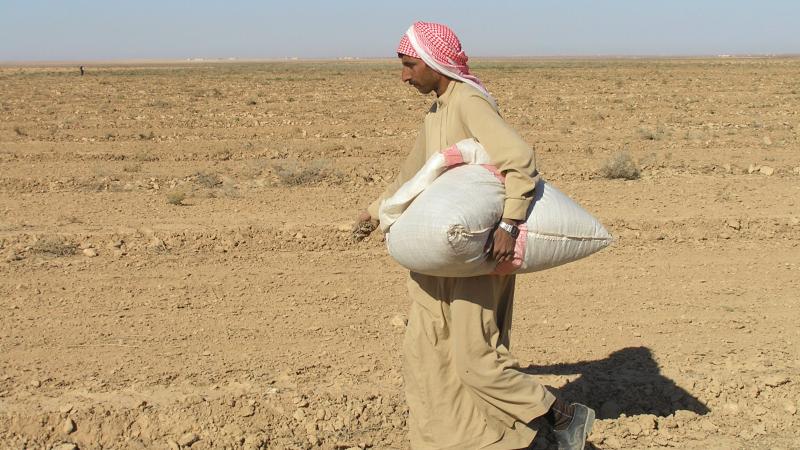How can financial incentives enhance agricultural development?

A new ICARDA study suggests that financial incentives are the key to sustainable rangeland management – an alternative to state subsidies that encourages more sustainable practices.
The challenges facing rangelands are immense: low and variable rainfall, increasing population pressures, and unsustainable management practices. The result has been widespread degradation and rising poverty, threatening the survival of agro-pastoral communities.
Although a shift to sustainable rangeland management strategies would help, current policies make this shift more difficult. Governments often subsidize feed resources (mainly barley), encouraging steady increases in livestock numbers and overgrazing, and a widespread reliance on poly disk plows to cultivate barley removes vegetation, stimulates erosion, and uplifts ‘dead’ soil – leading to a crusted surface that prevents water infiltration, disrupts seed germination, and promotes further degradation.
A more sustainable approach
ICARDA scientists explored the potential of using financial incentives to enhance the adoption of sustainable management practices in Syria. They used a Minimum Data Analysis (TOA-MD) tool to conduct an ex-ante analysis of the economic viability of new technologies and practices, and the role that financial payments could play in enhancing their adoption.
The study explored the adoption potential of three sustainable rangeland management practices: periodic resting (preventing grazing for a specific period), direct seeding, and shrub transplantation. A random sample of 25 communities in Aleppo province were surveyed in 2010. The gathered data included: household demographics; past and current land-use dynamics; and perceptions of drought, rainfall fluctuation, degradation, and rehabilitation.
The model suggested that modest payments could ensure sustainable management practices became more attractive than barley cultivation. For shrub transplantation, for instance, an incentive payment of 20 USD per hectare (USD/ha) per year increased adoption rates by 30%, 140 USD/ha increased adoption rates by 60%, and 260 USD/ha by 100%. The corresponding rates for direct seeding were 60%, 85%, and 100%.
Creating an enabling environment
Financial incentives clearly have a role to play in sustainable development strategies. However, incentives alone will not work –a favorable enabling environment and institutional arrangements are also required to enhance good governance. Decision-makers need to strengthen the capacity of local institutions, establish clear land tenure, extend community control over land management, and introduce flexible payment schemes.
This research was supported by the CGIAR Research Program on Livestock Agri-Food Systems (CRP Livestock) and the OPEC Fund for International Development (OFID).
This article is based on a peer-reviewed paper recently published in the Journal of Environmental Management: ‘Financial incentives: Possible options for sustainable rangeland management?’
Authors: Mounir Louhaichi, Yigezu Yigezu and Jutta Werner.
